Casestudy
Scaling a Design Practice in Rapid Growth
Challenge
After a period of rapid growth and scale, Foundation Medicine’s Product Design team was facing a grouping of challenges related to process and delivery. Team members were sharing feedback around experiencing ambiguity during execution and regular learnings are not being effectively shared across the organization. In addition, there is inconsistency in the delivery of work.
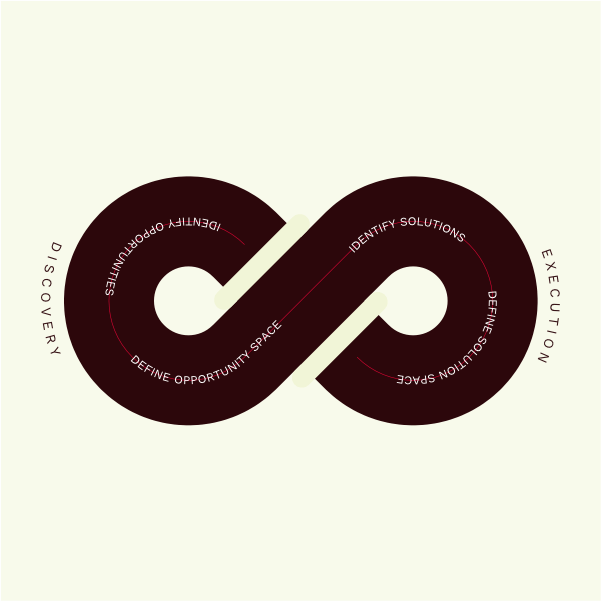
A model for a sustainable design practice that I've found helpful. You can jump on anywhere, but it helps to know where you are.
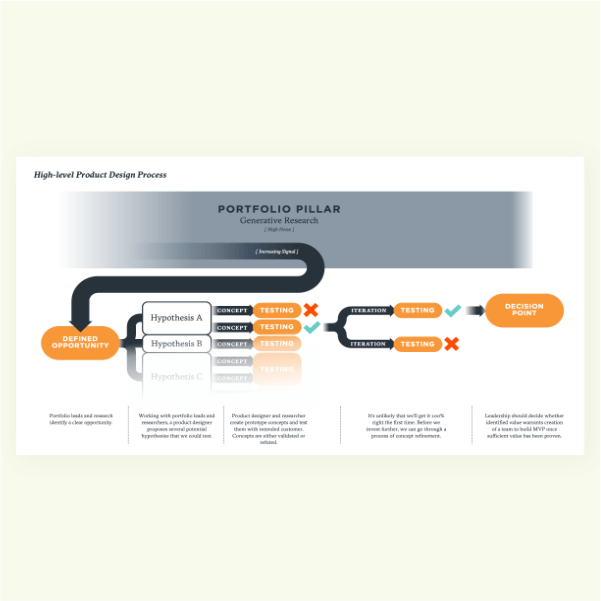
Zooming in a bit, this is how I would talk about the "Execution" side with stakeholders. It's a process of exploration and iteration.
Approach
To address these issues, I started by gathering feedback from various sources to understand the specific issues and where stumbling blocks arose. I also sourced methods that team members frequently utilized and while also identifying common practices missing from out toolkit. Based on my findings, I proposed an initial set of methods to the team and solicited their feedback. I also involved the team in co-creation sessions that we could leverage individual expertise. This collaborative approach allowed us to involve everyone in the development or refinement of these methods. Once we had an agree-upon set of methods, I started socializing them across the organization to help stakeholders understand how they might collaborate with the team.
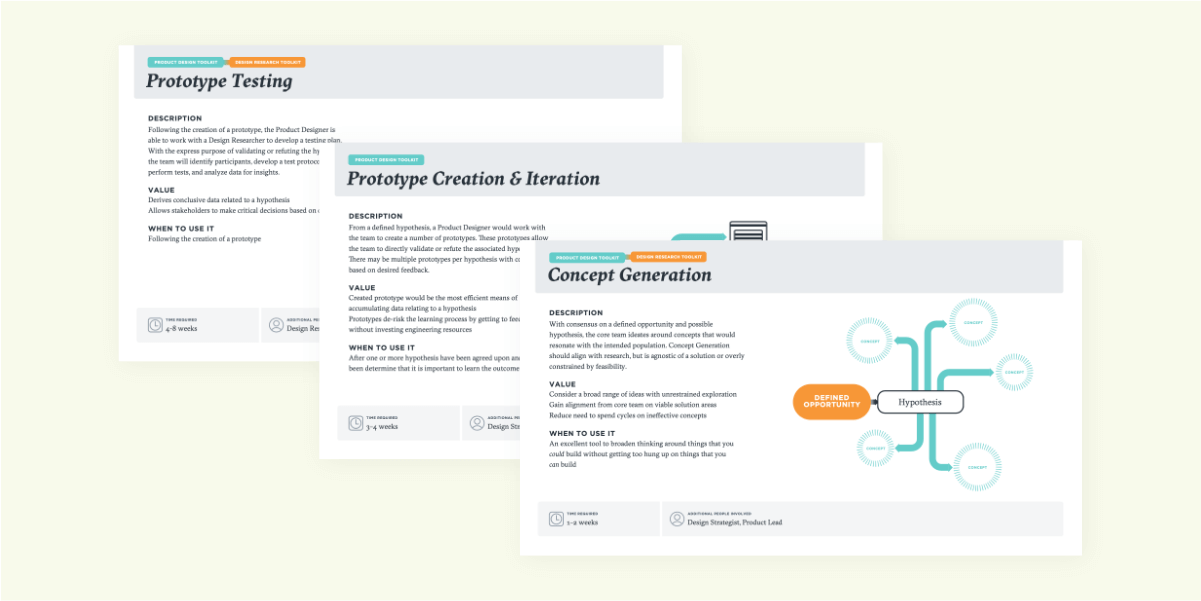
Some examples of methods that I codified with the team. Each method has guidance on implementation as well as how long it should take and who should be involved.
Outcomes
The solution we implemented consisted of several key elements. We focused on breaking down the design process into manageable stages to ensure clarity and consistency. We established a starting set of methods that were rolled out to other designers within the organization. We began with implementing a design review process to provide a clearer starting point for designers when facing ambiguous situations. This approach aimed to improve communication and collaboration with stakeholders.
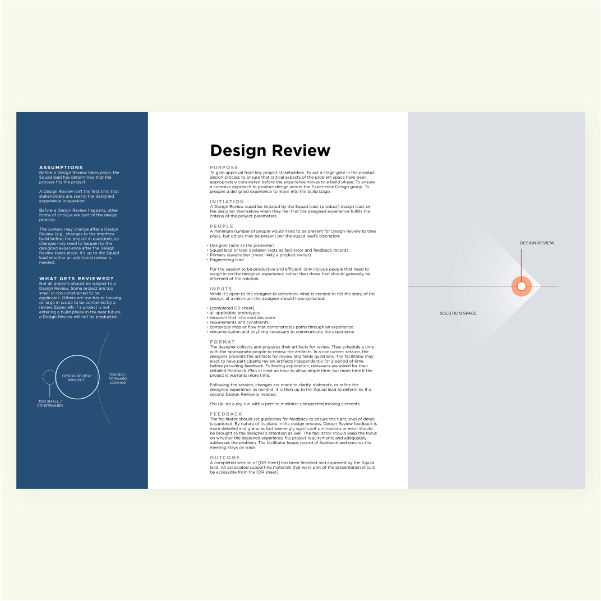
One of the first methods that we put into action was a design review, which was not happening previously. Here's more detail for designers on how to run a Design Review.
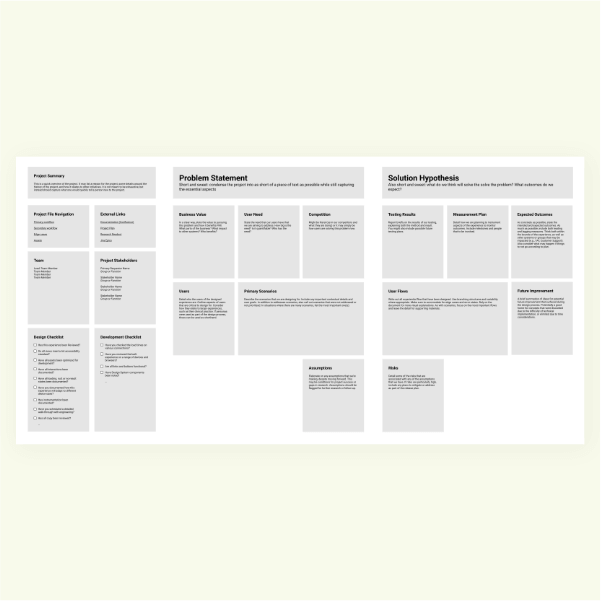
The template for the Design review. The intention was that it could be a living document that the designer could fill out as they went and use as a sort of check list.
Impact
As a result of these efforts, I received feedback on several positive outcomes. Firstly, there was greater consistency in the design deliverables across the organization. Designers now had clearer starting points when dealing with ambiguous situations, leading to more efficient and effective work. Moreover, these changes provided valuable learning opportunities for the team members to share their expertise, fostering professional growth and development. Lastly, the enhanced communication and collaboration with stakeholders contributed to smoother project execution and improved outcomes.
All Case Studies